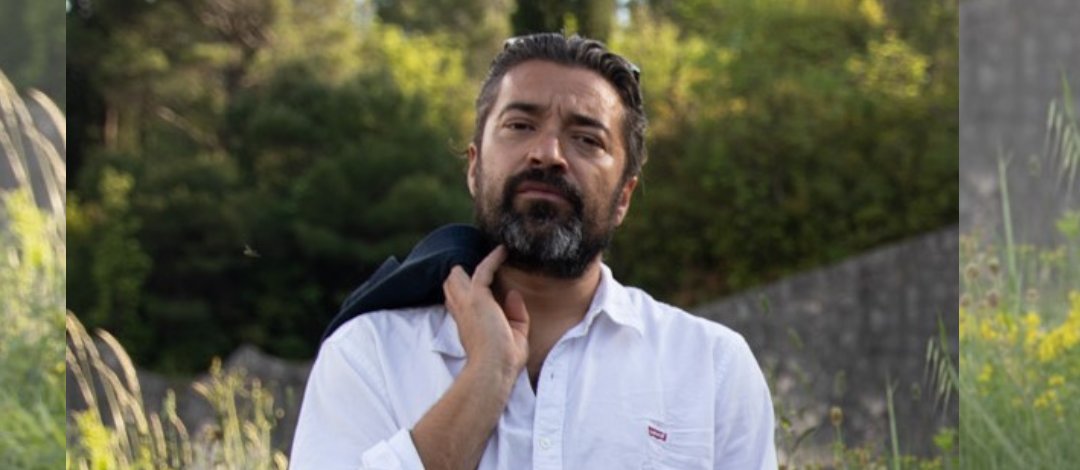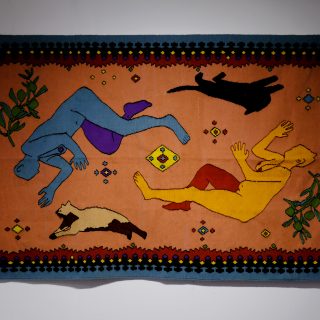Each year when the day marking the liberation of Belgrade from fascism arrives, especially when it’s a significant round-number anniversary, there is a sense of anxiety about how it will be officially commemorated. Then a person such as myself for example might feel somewhat uncomfortable even writing about it because they neither live in Belgrade nor are they a citizen of Serbia. But even if my grandparents had not spent half their lives on Boulevard of the Revolution (which no longer bears that name) and if my mother had not been raised in Belgrade, I would still, despite everything that has happened in the meantime, consider that liberation something personal. Because on October 20, 1944, the city I feel is mine was liberated – the capital of the country where I was born and which shaped it as it is today. Even if a series of mayors with Šapić’s worldview were to lead it now, and they continued demolishing its fascinating architectural monuments, like Hotel Yugoslavia, it would take them three lifetimes and about twenty “Belgrade Waterfronts” to erase the capital’s past and turn it into a soulless place without identity.
I don’t know about others, but my first personal association with the liberation of Belgrade is always the album Death to Fascism by Plavi Orkestar and that moment when the speaker’s voice declares: “This is free Belgrade speaking.”
Returning to the current context of the city’s liberation, there is no visit from Vladimir Putin, no rush to restore the names of Soviet generals and Yugoslav partisans to Belgrade’s streets, Zagreb’s streets aren’t being revoked, and we haven’t yet heard any Ljotić-style songs in the celebration’s soundtrack. However, one of Belgrade’s most beautiful murals, the only one dedicated to the day of liberation from fascism, has been painted over. This led to a brief topic in the opposition media and a justified outcry from Branislav Dimitrijević, the man who originally conceptualized the mural in question, but it’s clear that by tomorrow this topic will be forgotten by the wider public.
The day of Belgrade’s liberation is sincerely commemorated by a handful of anti-fascist members of the opposition, like Dimitrijević himself, while it is officially commemorated for every reason except the reasons it should be – the essence of the partisan struggle and the horrors of occupation that ended on October 20. Few cities endured such a struggle or had a death camp practically at its heart, which today is deliberately and unnecessarily attributed to the ustasha regime simply because it was located on the other side of the river, formally on the territory of The Independent State of Croatia. The shamelessness of this approach goes so far as to name the riverbank near one of the most terrifying concentration camps, which sent nearly the entire Jewish population of Belgrade to their deaths, after another death camp that truly was run by the ustasha regime. This goes hand in hand with the fact that the Old Fairground has still not been transformed into a true memorial site.
The current respect for the content of anti-fascist struggle is perhaps best reflected in the current mayor, who publicly advocates for the removal of the tomb of the leader of that struggle from Belgrade, along with erecting a monument to a man who led a collaborationist movement, officially recognized as the second anti-fascist movement in Serbia.
It is clear that, under such circumstances, the commemoration survives only because of the significance of the event itself, to show the world that Serbia was and remains part of the anti-fascist coalition, and because it is essentially the only real historical moment when the Russians—overlooking the fact that it was a Soviet, not solely Russian army—did genuinely assist Belgrade and Serbia.
The fact that it was the Yugoslav anti-fascist movement which, with the exception of Belgrade, liberated the country alone, that this victory established socialist Yugoslavia and built most of Belgrade, and that its idea was far more noble than the reality we live in now, is seen by the authorities and the prevailing mindset as a mere inconvenience to be forgotten. Except, of course, when it’s politically convenient to reference the Non-Aligned Movement.
Regardless of all this, Belgrade deserves to mark its liberation and remember all that came before it and everyone who participated in it. Ordinary people who truly care about anti-fascism as an idea should once again read Milan Radanović’s book on the subject, then walk to the Liberators of Belgrade Cemetery, and take just a few more steps into the wondrous world of the Jewish Cemetery and a community erased from Belgrade by fascists. And there, among that vanished world, pause at Bogdan Bogdanović’s monument and find his grave, perhaps recalling his lifelong, consistent anti-fascism and the fact that he, as an authentic citizen of Belgrade endlessly in love with his city, once had to leave it, only to return for his final rest among the defeated.
Dragan Markovina (Mostar, 1981) is a historian, publicist, and writer. From 2004 to 2014, he worked at the Department of History at the Faculty of Philosophy in Split, during which he obtained a PhD in science and the title of associate professor of history. He is the author of books such as Between Red and Black: Split and Mostar in the Culture of Memory (Zagreb-Sarajevo, 2014), The Silence of a Defeated City: Essays, Stories, Columns (Mostar, 2015), The History of the Defeated (Zagreb, 2015-Sarajevo, 2016), Yugoslavism After Everything (Belgrade, 2015), The Age of Counter-Revolution (Zagreb, 2017), Lonely Children of the South (Split, 2018; Belgrade 2019), Yugoslavia in Croatia (1918-2018): From Euphoria to Taboo (Zagreb, 2018), Lebanon on the Neretva: The Culture of Memory, the Culture of Oblivion (Mostar, 2019), Neum, Casablanca (Sarajevo, 2021), History, Politics, Popular Culture (Zagreb, 2022), Partisans Advance (Belgrade, 2022), and February 14, 1945 (Sarajevo, 2023).
Translation by Luna Đurđević




